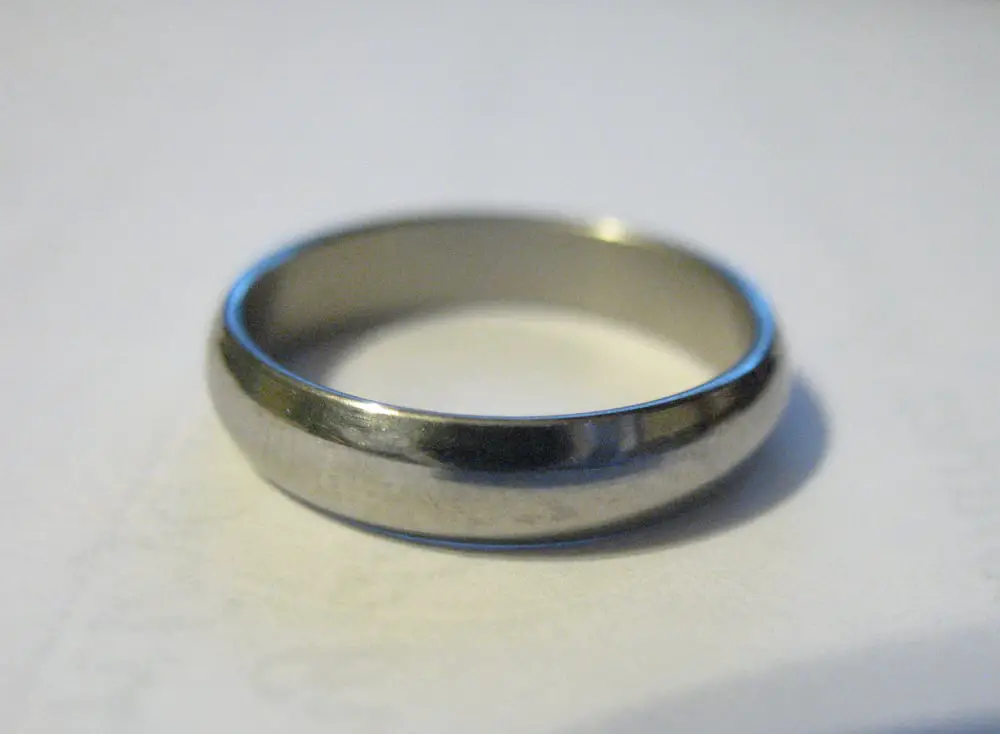
While Metal Detecting you will find all sort of targets, most of the time because your machine has helped you. But sometimes, just because you were lucky enough to find something valuable … That’s why it is important (especially as a beginner) to understand the capabilities of your metal detector to detect each target. In fact, one of the targets that people are asking questions about are those made out of Stainless Steel!
So, Do metal detectors detect stainless steel? Yes, metal detectors will help you to find most types and grades of stainless steel items. The process isn’t as easy as finding something made out of silver or copper for example because of its low electrical conductivity and its lack of magnetic properties. But with the right device and settings it is possible.
I am glad you are asking these kinds of questions, because this is what could make you a superior detectorist! That’s why I feel it is important to explain different grades of this metal, how to clean it properly. Also the valuable items made out of S.S you should expect …
What Makes From Stainless Steel Difficult to Detect?
Many people think that stainless steel is a non-ferrous metal which is totally wrong. In fact, non-ferrous metals are mostly alloys with very low iron amounts on them. Instead, S.S. is more of a ferrous metal as its composition is mostly based on iron (60% up to 80%).
This explains why S.S is not easily detectable. In fact, iron has one of the weakest reactions to metal detectors electromagnetic fields. The received tones are usually broken or weak …
… In addition, there are many different types / grades of stainless steel (depends on the iron amounts). Most of them can be detected with a metal detector if the size is large enough. However, some of the very high end stainless (some medical instruments) are neither conductive nor magnetic, thus your instrument just cannot see it. To be detected it must be at least a little conductive and/or magnetic.
Magnetic permeability is also a big factor! S.S doesn’t have enough of it to be easily detected, yet it is possible to detect it using modern devices. This is caused by S.S composition that has also nickel that is notorious for its non-magnetic properties.
The lack of electrical conductivity and magnetic properties could be slightly improved during machining. Or any industrial process, but you should not expect a big improvement; just enough to make a S.S item detectable which is what we all want.
If you are already used to Stainless Steel types, keep in mind that the 316, 304 and 302 variations are the ones that your machine can HARDLY detect. Simply because they are non-magnetic …
… Unless they are in a big size!
Valuable Stainless Steel Targets you can find …
There are many targets that you may find made out of S.S:
Rings: They’ve got more and more popular and they are even using the name of this metal to market their products.
Bracelets, necklaces & women earrings: they are not as popular as rings as women prefer those rather made of gold. Yet you can find them and they are interestingly valuable.
Hands watch carpet: The best watch brands out there like Audemars Piguet, Arnold & SON, Bell & Ross, Casio as well as others base their carpet mostly on stainless steel. What a nice find that would be …
Pocket knife: these kinds of knifes have a sweet value that could go up to 40 bucks.
The previous items could be found literally anywhere, especially in parks, beaches and places that has hold events recently.
Cooking sets: The highest quality cooking set used in the kitchen is based on stainless steel.
Dustbins: There are some bins that are based on S.S
The 2 previous items could be found in dumps and around houses!
What Metal Detector should you use to find Stainless Steel?
In this case you should not use detectors designed for Gold. Indeed, most of them discriminate metals based or steel, brass and iron thus S.S won’t be detected. You should also avoid machines made for beach detecting; they won’t help you in this case as well.
You should opt for devices that can handle low frequencies perfectly. There are some detectors that have relic mode in them; this mode can help you to easily find S.S.
In this case, a bounty hunter land ranger, Garett AT Pro (Check it Here at Amazon!) or even Garett Ace 300 (Check it Here at Amazon!) would be useful! These machines are called VLF detectors, VLF stands for ‘Very Low Frequency’.
Keep in mind, that you should avoid highly mineralized soils and grounds with high iron concentrations under them. Otherwise, finding S.S targets would be a much difficult task to achieve unless you are using one of there detectors!
Cleaning Your S. Steel Finds …
Cleaning your finds is an important part of the overall process! You need to be enough knowledgeable about it. In fact, each metal has specific methods and techniques to be cleaned properly. For S.S you need to implement some of these tips:
Dish cleaner: use few drops of this cleaning soap with water and start cleaning your find with a sponge.
Water: if you’ve got something really valuable like a watch and you don’t want to risk damaging it. You can clean it using only warm water. Generally this should be enough in most cases.
Dedicated cleaner: there are some products in the market that are dedicated to clean stainless steel. You can test them out, yet don’t use any product out there unless you are sure it has a good reputation. So you will make sure you don’t damage your find.
What is the difference between Steel and Stainless Steel?
There are some people who practice metal detecting but don’t make the difference between steel and stainless steel. This is not a positive thing for a detectorist because understanding these details is a must!
In fact, a stainless steel item doesn’t mean it will never have stains built on it. It just means that it has high resistance to stain and corrosion. Regular steel has tons of industrial usages and applications, however, S.S has pretty restricted usages like jewelry and cutlery.
Regular steel (also called carbon steel) as it has a small portion (1 – 2%) of carbon. It reacts to air and water by rusting … For S.S a thin layer of chromium is what prevents rust and corrosion.
Regular steel is much harder and stronger than Stainless Steel that’s why the latter is pretty hard when it comes to welding. In addition one of the advantages that regular steel has over S.S is the possibility to make it stronger by adding small portions of carbon to it.
Types of Stainless Steel …
It is interesting to learn a bit more about different types of S.S you can find. I would like to share the main types here:
Ferritic: Mainly Chromium (Learn how to metal detect for Chromium) with little portion of Carbon under 0.1 percent. It is designed to resist to difficult conditions just like sea water. They’ve got considerable magnetic properties.
Austenitic: This type is the most used one. The alloy is empowered by Nickel and Nitrogen in order to become easier for welding purposes. This type is pretty flexible and can be strengthened and become much more resistant to corrosion.
Martensitic: Pretty the same as ferritic steel with more portions of carbon. This type is hard and not adapted for welding.
Duplex: Half of its composition is based on ferritic properties and the other half is on austenitic. So it has a higher resistance to corrosion and with properties allowing it to be used easily for welding.
Precipitation hardening: This is the more flexible type of S.S as it incorporates other metals like aluminum, copper … So it will beneficiate from their chemical properties.
Does Stainless Steel set off Airport Metal Detectors?
I’ve found that this question was asked pretty often, that’s why I wanted to include it here! Indeed, airport detectors have evolved over time and are now able to detect stainless steel as easily as non-ferrous metals.
This could even cause problem for those who have implants based on S.S . That’s why implants are also made today out of titanium and other elements.
Can x-ray Detect Stainless Steel?
This is another question that I want to address quickly! X-rays detect according to the density of the material rather than its conductibility or magnetic capabilities. S.S has a density of 8,027 g/cm3 which is a serious high density.
This allows x-ray not only to detect S.S items very easily but also to picture very small parts of it around 1 millimeter of size or even less than that.
Conclusion
If I’ve answered your question by a simple yes or no, this wouldn’t be much helpful for you. That’s why I really wanted to give you the big picture about Stainless steel as a metal and the possibilities to detect it with a conventional metal detector and other devices as well. Hopefully, you’ve learnt something new and you’ve got all your questions properly answered!
Now, I really want to hear from you! Have you ever found a S.S target before? If so what is it and what metal detector have you used? Tell me more about your experience in the comment section below …
… Finally, if you are looking for more valuable metallic items … I invite you to check this Platinum Detection Article! You will find some helpful and practical Information …
